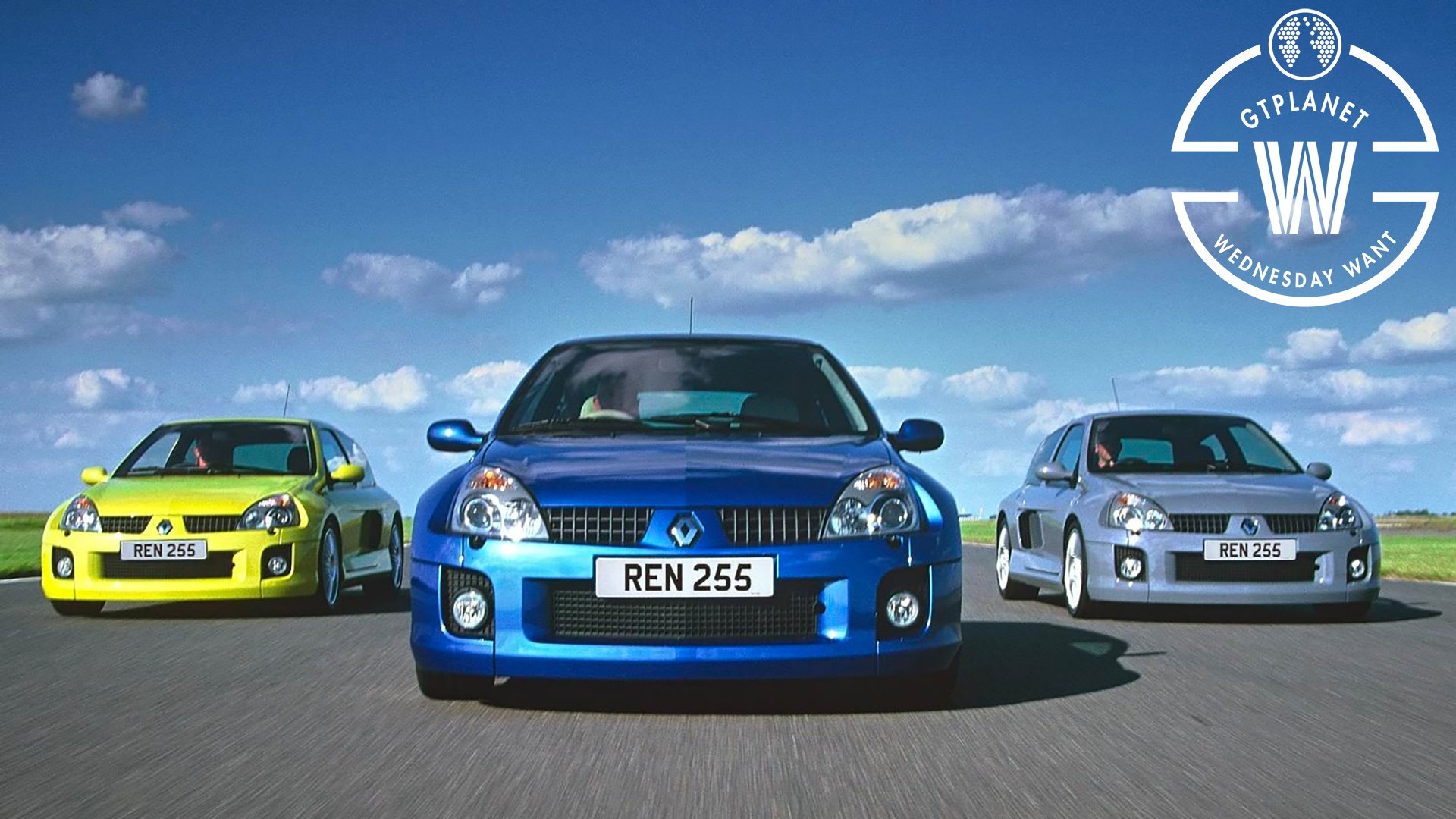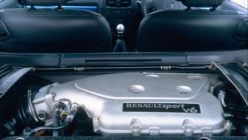Welcome to Wednesday Want. Each week, our team will pluck a car from our thousands-strong Car Suggestions forum and give it some time in the spotlight. From the weird to the wonderful, we’ll be covering the full automotive spectrum. You can check out past Wednesday Want entries right here.
Last week we were reviewing the most recent version of Renault’s signature hot hatch, the Clio Renault Sport. It’s a decent little thing, and another solid entry in a long old catalogue for the brand.
Indeed there’s been a hot little Clio since as long ago as the original Clio Williams — a lip service branding exercise between Renault and the Formula One team it supplied at the time — back in 1993. The form has barely changed across the near 25-year run; a hot Clio has as much power as anything else in the sector can boast, from a two-liter engine driving the front wheels.
Except for one occasion. Just once Renault completely lost the plot and created a car that was a classic while it was still on sale: the Clio V6.
Strangely the V6 began life thanks to Group B. Renault was about to update its Clio range with an all-new car, the Clio II, and wanted a promotional tool. Remembering the ludicrous R5 Turbo from its rally heyday, Renault built a one-off, mid-engined version of the Clio II. It showed the wide-bodied car off at the 1998 Paris Motor Show.
To say it captured the imagination is an understatement, and it was quickly earmarked as a racing car to replace the Renault Sport Spider for Renault’s official one-make series.
Tom Walkinshaw Racing (TWR) set about the task of turning the mid-engined, rear-driven Clio into a reality. It was no small challenge either — typically the rear wheels in a front-wheel drive car are only there to stop the back-end from scraping on the floor, and TWR had to not only make them power the car but insert a gearbox where it wasn’t designed to go.
The Clio needed significant work then, even without consideration of what engine would go in. For that, TWR selected the part-Peugeot, part-Renault, three-liter V6. You’d find this in all manner of large French vehicles in the 1990s, from the Peugeot 406 Coupe to the Renault Avantime. With a little TWR magic, it was good for 280hp in race trim.
Ultimately, it ended up as an astonishing racing car, as this video of the 2002 season shows:
That did nothing to deter the public, and so Renault and TWR concocted a road car, which came to market in 2001.
It had some drawbacks, of course. The Clio’s famous practicality was all but gone, with the engine replacing the rear seats, and almost no luggage space. It was a full foot wider than the original car, which made maneuvering it a bit of a challenge — particularly with an oil tanker-sized turning radius of over 40 feet.
The increase in weight also meant it wasn’t significantly quicker than the ordinary hot hatch. TWR detuned the engine to 227hp for road use, but the car weighed in at 3,000lb. That gave it just a couple of tenths’ advantage over the regular Clio 182, with nearly 50hp less.
But above all, it was a tricky car to drive. With so much weight, so far back in the car, it was prone to understeer. Lift off and it was liable to oversteer. The incredibly short wheelbase and excess of power meant any application of throttle would result in incredible oversteer. Add in wet roads and this all magnified.
Renault’s solution was a facelift, to coincide with the Clio’s own new look, and to seek the help of Porsche – what better expert in rear-heavy cars can you find? It also brought production home, with Renault Sport building the cars in Dieppe.
The second generation car gained a little power — Renault often refers to the two generations as 230 and 255, after their metric horsepower output — but the changes under the skin made the difference.
External dimensions remained the same, but an extra inch in the wheelbase and a widened front track cured some of the handling peculiarities, along with a few suspension revisions. It’s still not something to drive hard in the wet, but in the dry, the second generation Clio V6 is the car it should’ve always been.
There’s still a few wrinkles, of course. Renault paid almost no attention at all to the inside, so the £27,000 Clio had the same cabin (in the front) as the £16,000 Clio 182 — and it is genuinely dreadful. And sadly, Renault didn’t make enough of them. The arrival of the third generation Clio saw the V6 project cancelled, after just four years.
With just 2,800 cars built and classic status within its own lifetime, the Clio V6 is a glorious example of a much madder time. If you have one, never sell it. Except to me.
See more articles on Renault and Wednesday Want.

















